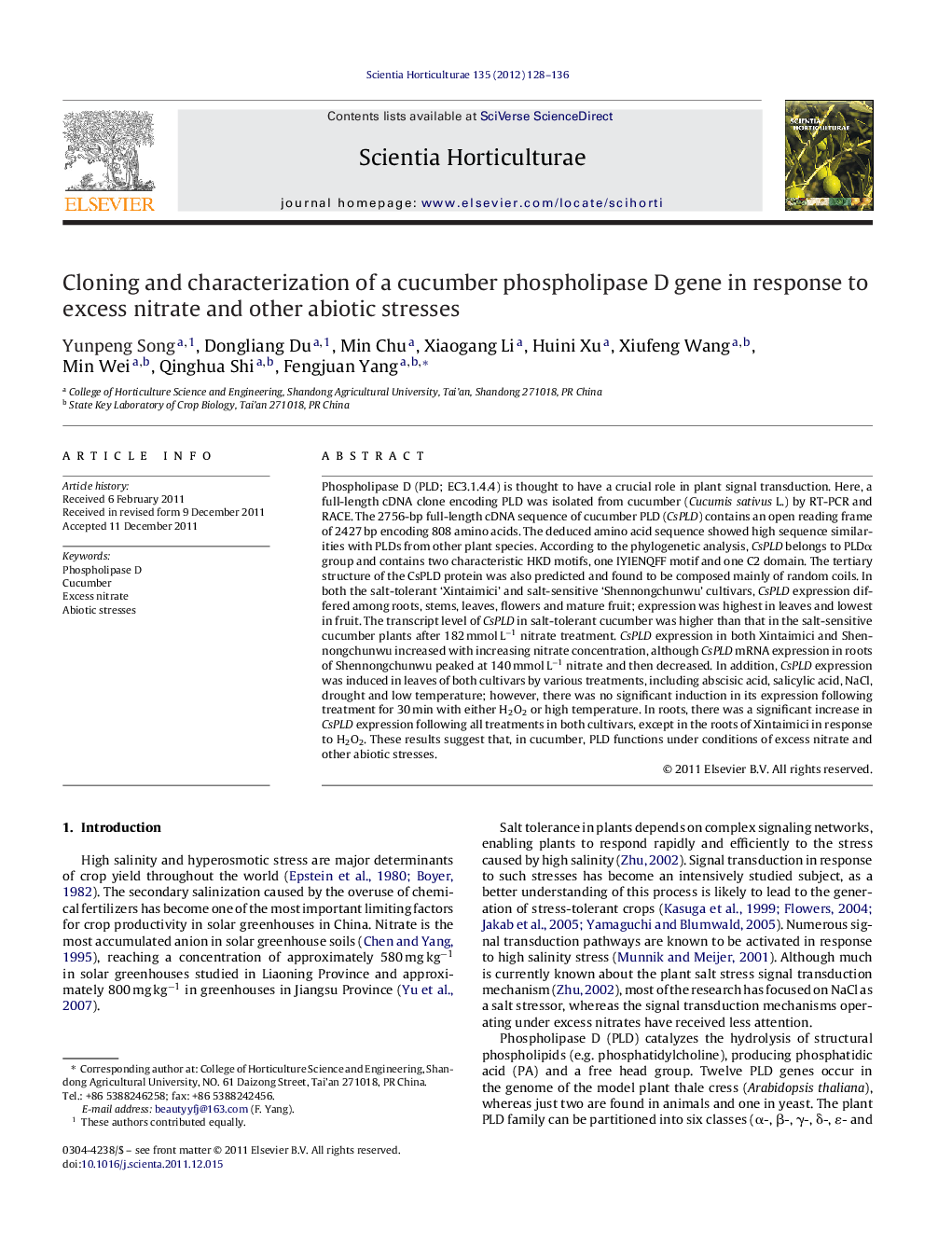| کد مقاله | کد نشریه | سال انتشار | مقاله انگلیسی | نسخه تمام متن |
|---|---|---|---|---|
| 4567834 | 1628863 | 2012 | 9 صفحه PDF | دانلود رایگان |

Phospholipase D (PLD; EC3.1.4.4) is thought to have a crucial role in plant signal transduction. Here, a full-length cDNA clone encoding PLD was isolated from cucumber (Cucumis sativus L.) by RT-PCR and RACE. The 2756-bp full-length cDNA sequence of cucumber PLD (CsPLD) contains an open reading frame of 2427 bp encoding 808 amino acids. The deduced amino acid sequence showed high sequence similarities with PLDs from other plant species. According to the phylogenetic analysis, CsPLD belongs to PLDα group and contains two characteristic HKD motifs, one IYIENQFF motif and one C2 domain. The tertiary structure of the CsPLD protein was also predicted and found to be composed mainly of random coils. In both the salt-tolerant ‘Xintaimici’ and salt-sensitive ‘Shennongchunwu’ cultivars, CsPLD expression differed among roots, stems, leaves, flowers and mature fruit; expression was highest in leaves and lowest in fruit. The transcript level of CsPLD in salt-tolerant cucumber was higher than that in the salt-sensitive cucumber plants after 182 mmol L−1 nitrate treatment. CsPLD expression in both Xintaimici and Shennongchunwu increased with increasing nitrate concentration, although CsPLD mRNA expression in roots of Shennongchunwu peaked at 140 mmol L−1 nitrate and then decreased. In addition, CsPLD expression was induced in leaves of both cultivars by various treatments, including abscisic acid, salicylic acid, NaCl, drought and low temperature; however, there was no significant induction in its expression following treatment for 30 min with either H2O2 or high temperature. In roots, there was a significant increase in CsPLD expression following all treatments in both cultivars, except in the roots of Xintaimici in response to H2O2. These results suggest that, in cucumber, PLD functions under conditions of excess nitrate and other abiotic stresses.
► A full-length cDNA clone encoding phospholipase D (GenBank Accession No. EF363796) was first isolated from cucumber.
► Bioinformatics of CsPLD sequence have been analyzed.
► Three-dimensional structure of CsPLD protein has been predicated.
► The expression of CsPLD can be induced by excess nitrate and other abiotic stresses.
Journal: Scientia Horticulturae - Volume 135, 24 February 2012, Pages 128–136